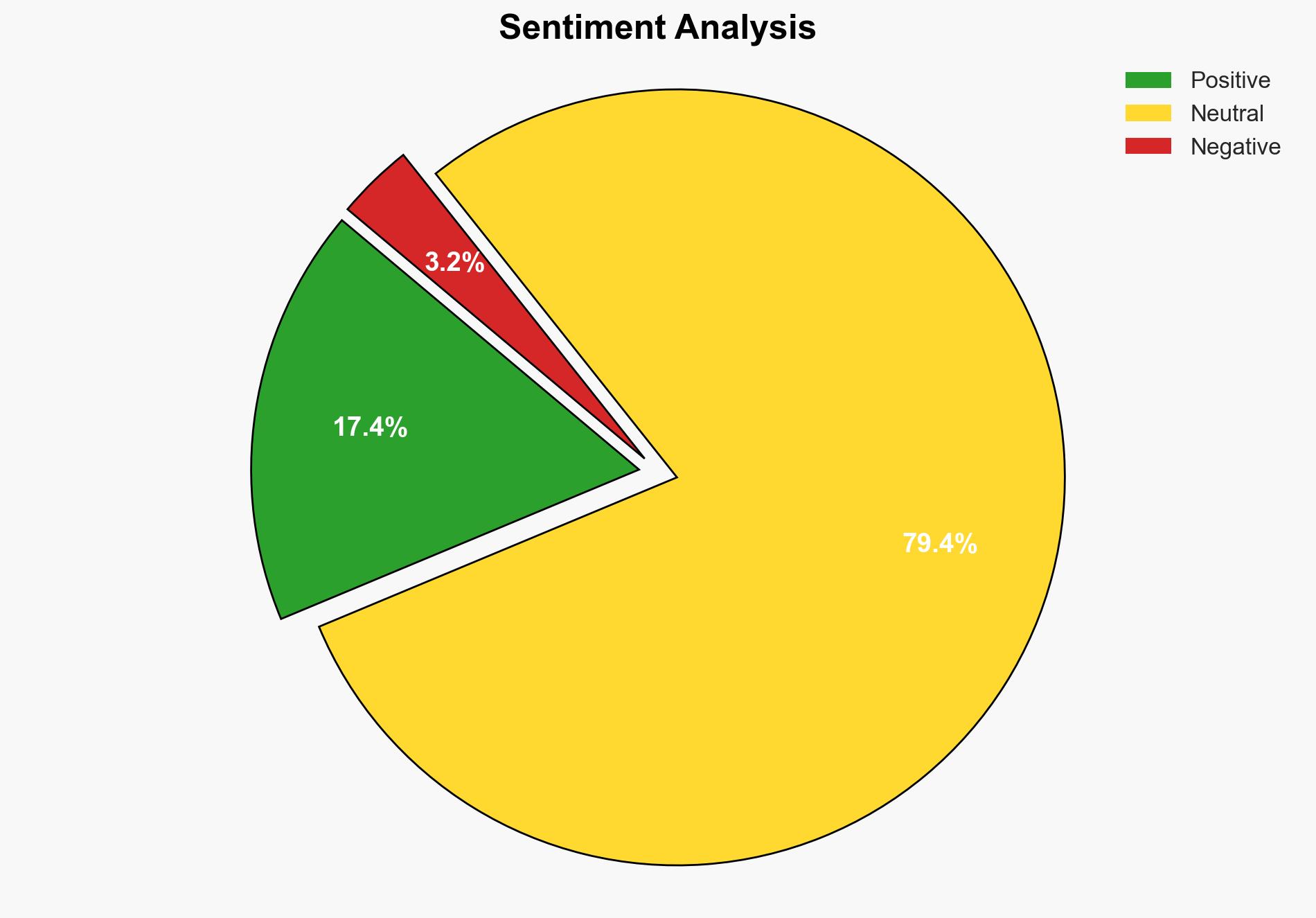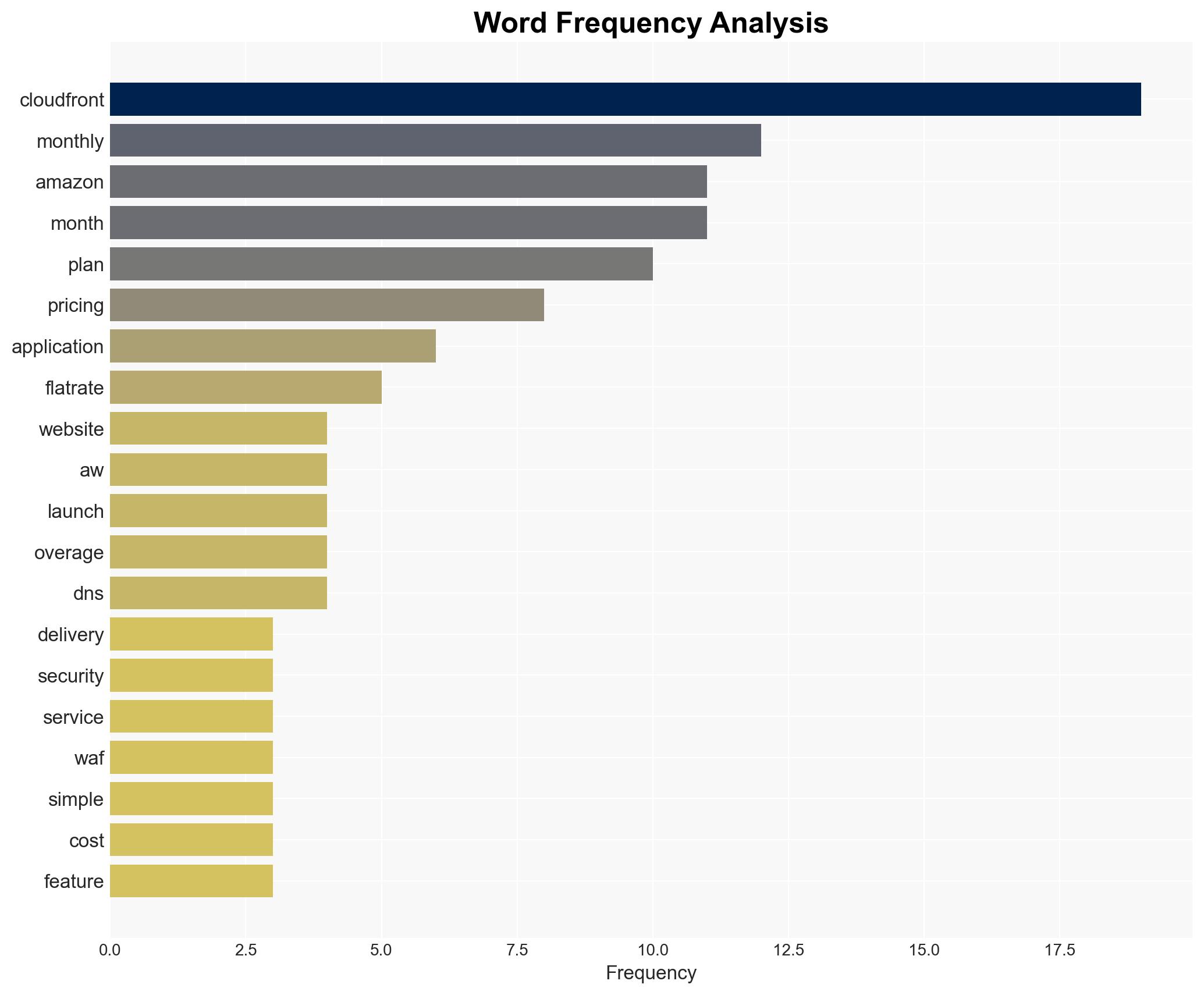AWS announces flat-rate pricing plans for website delivery and security – Amazon.com
Published on: 2025-11-18
AI-powered OSINT brief from verified open sources. Automated NLP signal extraction with human verification. See our Methodology and Why WorldWideWatchers.
Intelligence Report: AWS Announces Flat-Rate Pricing Plans for Website Delivery and Security
1. BLUF (Bottom Line Up Front)
The introduction of flat-rate pricing plans by AWS for website delivery and security is likely a strategic move to capture a larger market share by simplifying cost structures and enhancing security features. This initiative is most likely aimed at small to medium-sized businesses that are sensitive to cost fluctuations and security threats. Confidence Level: Moderate.
2. Competing Hypotheses
Hypothesis 1: AWS is introducing flat-rate pricing to attract cost-sensitive customers and increase its market share among small to medium-sized enterprises (SMEs).
Hypothesis 2: AWS is responding to competitive pressures and potential market saturation by diversifying its pricing models to retain existing customers and prevent churn.
Assessment: Hypothesis 1 is more likely given the emphasis on simplified pricing and security features, which are particularly appealing to SMEs that may lack the resources to manage complex pricing and security configurations.
3. Key Assumptions and Red Flags
Assumptions: It is assumed that the flat-rate pricing will be attractive to SMEs and that these businesses prioritize cost predictability and security. It is also assumed that AWS’s competitors have not yet matched this pricing strategy.
Red Flags: The potential for AWS to undercut its own revenue streams if the flat-rate pricing does not cover operational costs. Additionally, there is a risk that competitors may quickly replicate or improve upon this pricing model.
4. Implications and Strategic Risks
Economic Implications: The flat-rate pricing model may lead to increased adoption of AWS services among SMEs, potentially driving revenue growth. However, if not managed properly, it could also lead to reduced profit margins.
Cybersecurity Risks: While the inclusion of security features like WAF and DDoS protection is beneficial, there is a risk that customers may become complacent, assuming that all security needs are fully addressed by AWS.
5. Recommendations and Outlook
- Actionable Steps: AWS should monitor customer feedback closely to ensure the flat-rate pricing meets market needs and adjust as necessary. Additionally, AWS should invest in marketing efforts to highlight the security benefits of the new plans.
- Best Case Scenario: AWS successfully captures a significant portion of the SME market, leading to increased revenues and market dominance.
- Worst Case Scenario: The flat-rate pricing fails to cover operational costs, leading to financial losses and potential reputational damage.
- Most Likely Scenario: AWS experiences moderate success with the new pricing model, necessitating further refinements to optimize profitability and customer satisfaction.
6. Key Individuals and Entities
Amazon Web Services (AWS), Amazon CloudFront, SMEs (Small to Medium-sized Enterprises).
7. Thematic Tags
Cybersecurity, Cloud Computing, Pricing Strategy, Market Expansion
Structured Analytic Techniques Applied
- Adversarial Threat Simulation: Model and simulate actions of cyber adversaries to anticipate vulnerabilities and improve resilience.
- Indicators Development: Detect and monitor behavioral or technical anomalies across systems for early threat detection.
- Bayesian Scenario Modeling: Quantify uncertainty and predict cyberattack pathways using probabilistic inference.
Explore more:
Cybersecurity Briefs ·
Daily Summary ·
Support us





